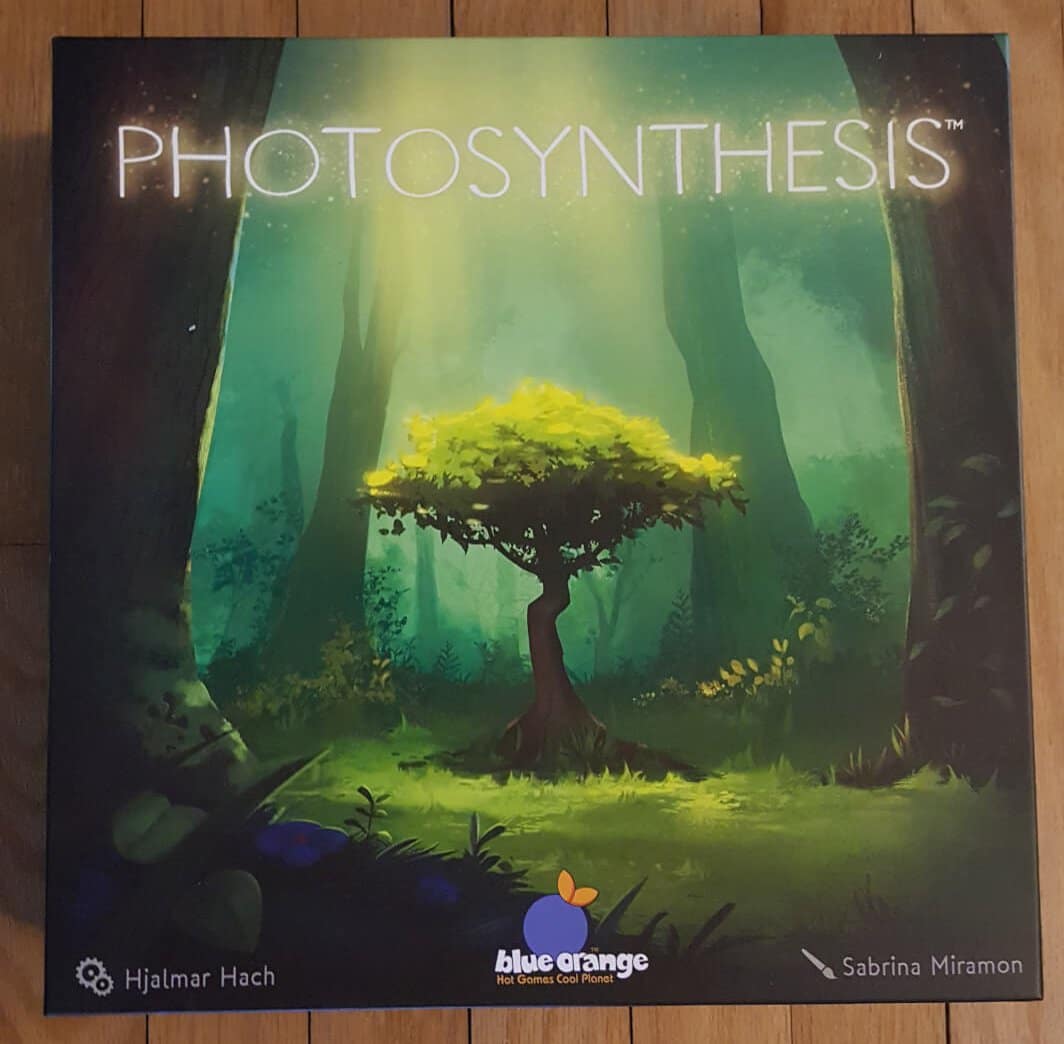Photosynthesis is a beautiful science themed game that features the tree life cycle and a rotating sun to collect light points. Blue Orange Games published Photosynthesis and it is recommended for players 8 years old and up. The game plays two to four players and takes 45 minutes to an hour to play. In Photosynthesis the sun moves around the board three times and players plant and progress trees through their life cycle to collect points. The trees are three dimensional and provide a beautiful visual as the forest “grows”.
Game Components
- Game board
- Sun Segment
- 4 Sun Revolution Counters
- 4 Player Boards
- First Player Token
- 24 Scoring Tokens
- 4 Light Point Trackers
- 24 Seed Tokens (6 of each variety)
- 32 Small Trees (8 of each variety)
- 16 Medium Trees (4 of each variety)
- 8 Large Trees (2 of each variety)
Game Play

Photosynthesis plays in rounds. Standard play is three rounds, and there is an advanced variant that adds a fourth round. Each round consists of two phases: the Photosynthesis Phase and the Life Cycle Phase. In the Photosynthesis Phase the Sun Segment moves clockwise to its next angle. There are lines on the board creating a hexagon to guide the sun placement and a square on the bottom of the sun segment to help the Sun Segment stay in the proper place. Once the sun is moved light points are calculate for each player. Each tree that is not in the shadow of another tree earns Light Points. Your own trees cast shadows and potentially cost you light points. Also, larger trees cast larger shadows. We found it helpful to go one player at a time and count collaboratively so we did not omit a tree’s light point or miss a shadow. Players track their light points on the individual player boards.
During the Life Cycle Phase players spend their light points. Players can complete multiple actions, however they may not take more than one action the same space within a turn. Players spend their Light Points to buy trees or seeds, plant seeds on the board, grow a tree, and collecting. Collecting is when you take your large trees and end their life cycle. You then earn a scoring token based upon their location on the board, which represents the richness of the soil.
The game ends after the sun makes three complete revolutions around the board. Points are then calculated based on scoring tokens and unuse light points.
Family Gaming Assessment
This is a wonderful game for the family. We played it with a nine year old and he picked up the format of the rounds fairly quickly. He did need significant coaching for the strategy. The very first game took over an hour as we all learned the rules and mechanics, but the game moved more quickly once we completed the first round. The complexity of the rounds and strategy is sufficient that this game would not scale down well. After seeing the coaching needed for the 9 year old, it may be better for 10 and up.
The format of the rounds are straightforward, and the game progresses smoothly once all players understand the flow of each round. We found it helpful to collaboratively count light points with each movement of the sun, since as the board became more full it was more challenging to keep track. Though not for the younger players, this is a great family game with older childern.
Conclusion
Photosynthesis is a great addition to your game collection. It is playable by a wide range of ages, incorporates science, and the artwork is beautiful. Plus, for any parent or child who has heard the album Here Comes Science, by They Might Be Giant, you can’t help but hear their song Photosynthesis in your mind as you play.
